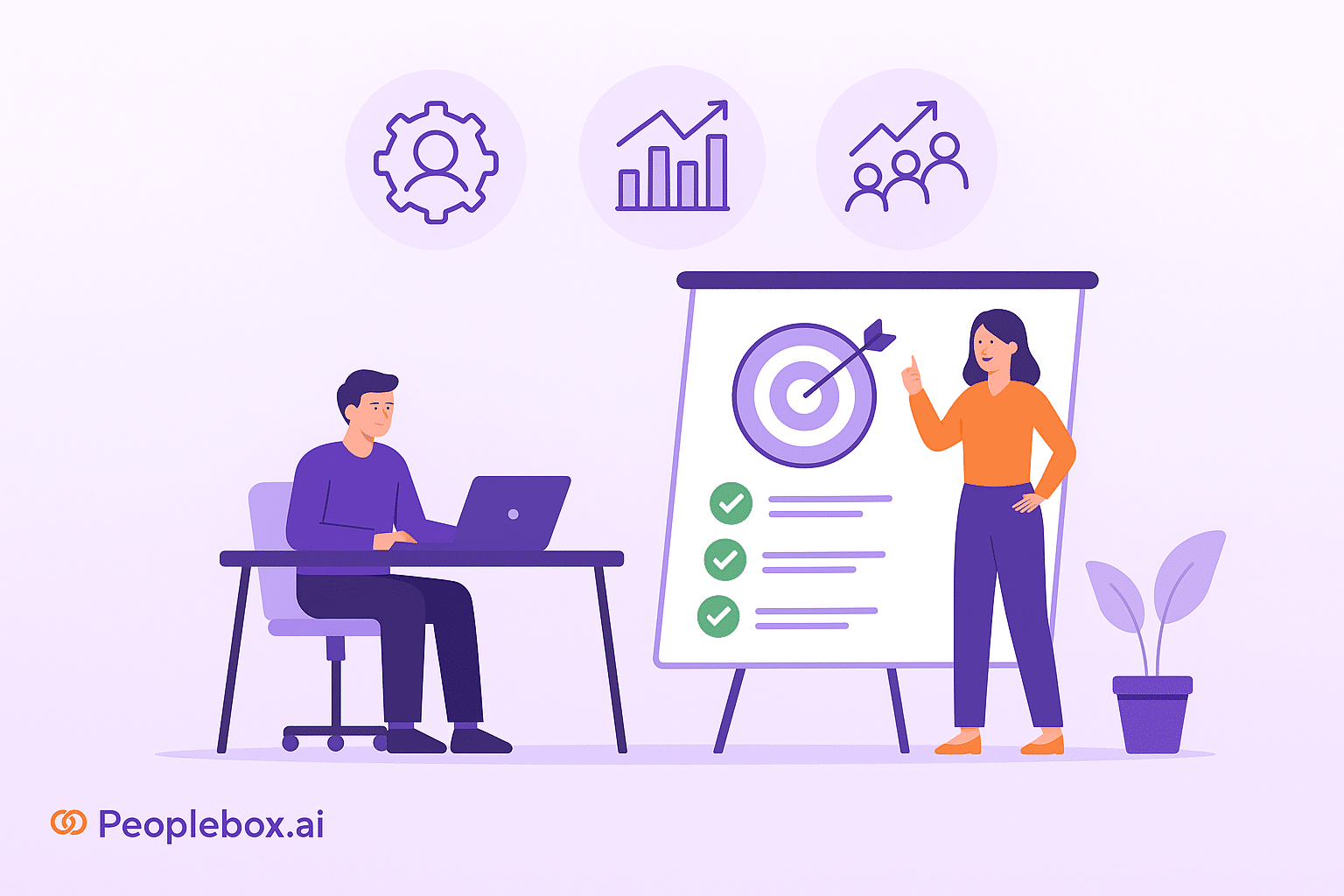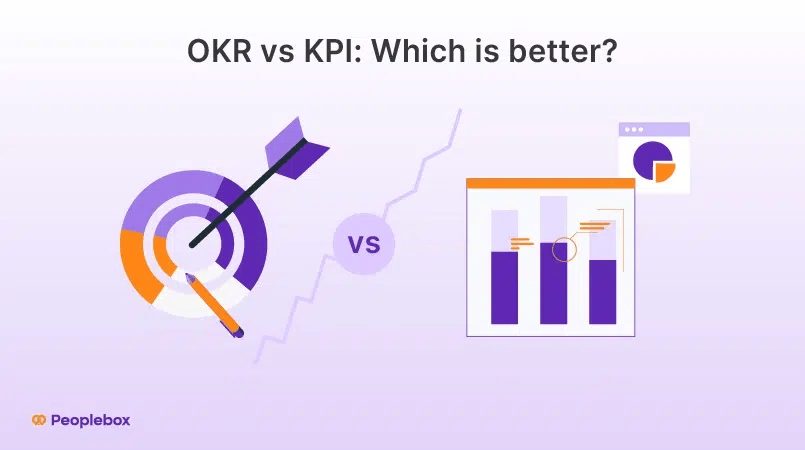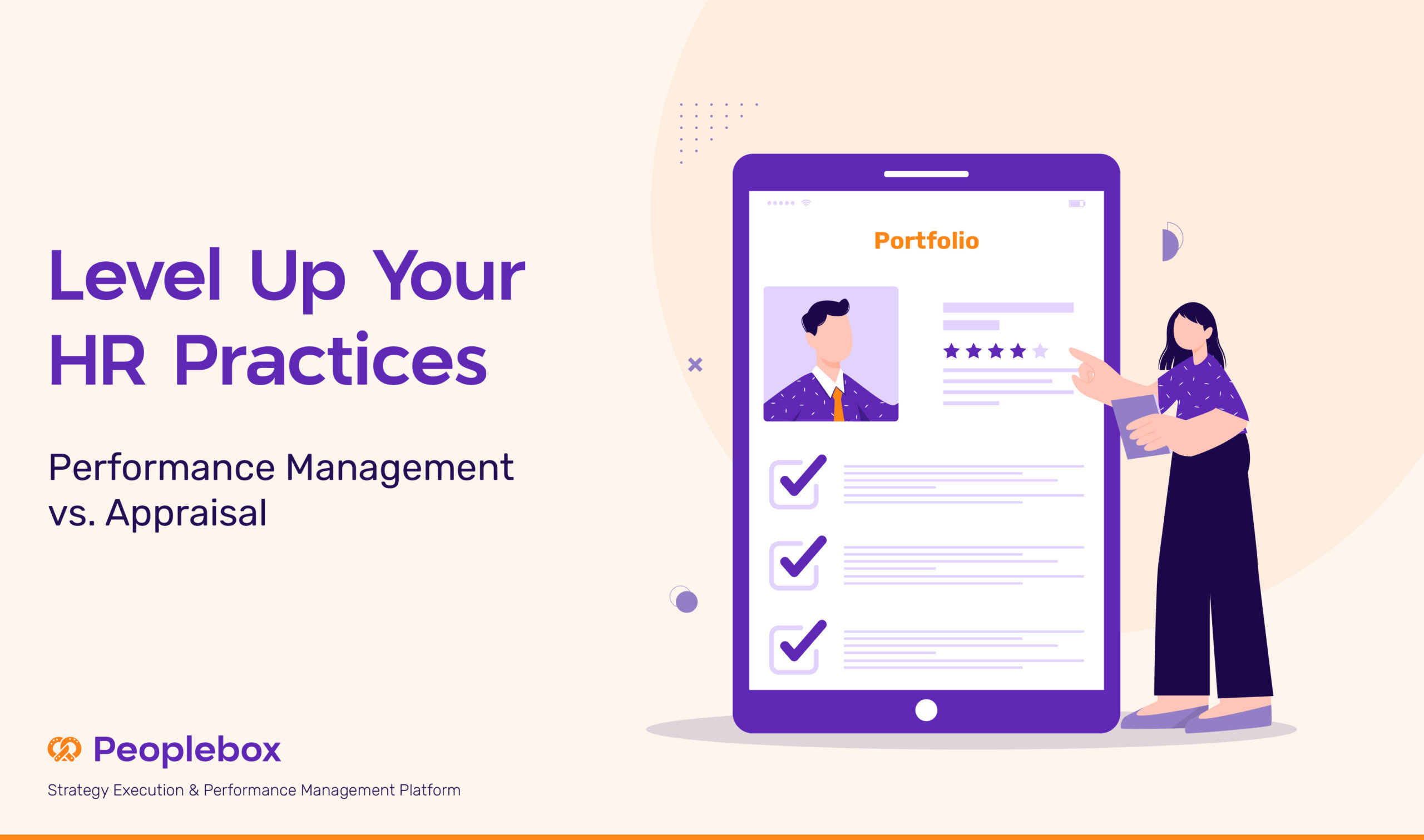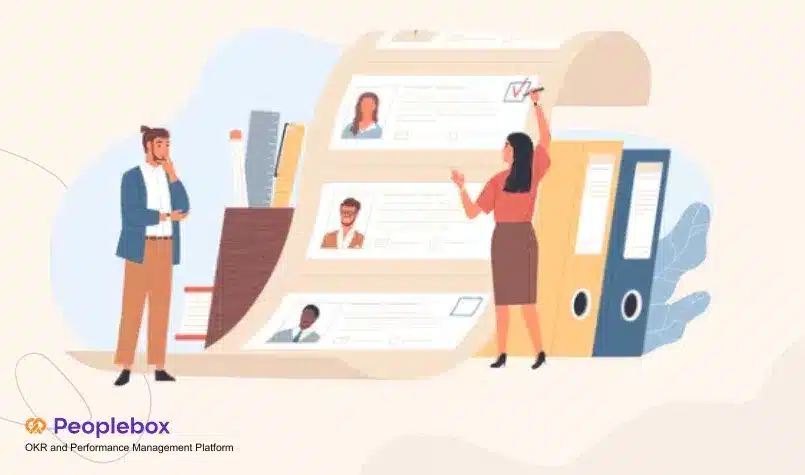TL;DR
Traditional performance appraisals like rating scales, checklists, and annual reviews can be slow and biased.
Modern approaches with real-time feedback, clear goals, continuous development, and actionable insights help employees perform at their best, improving engagement, retention, and overall organizational success.
Your workplace could have awesome items, new thoughts, and great tech. But, getting better over time really comes down to one thing: your people and how they do their jobs. Making a place where workers always give their best means smart ways to handle how they perform. This goes further than just yearly check-ups.
Good worker performance means turning what people can do into success for the whole place. This happens with clear goals, constant feedback, chances to grow, and using info to make smart choices.
This guide looks at tried-and-true plans for handling how workers perform. It gives simple ideas and real answers to help you make a system that allows your team to do all they can.
| “The most successful companies focus on developing and managing their talent effectively. Organizations that integrate performance management into their culture don’t just adapt to market changes, they thrive because of their people,” – Bersin by Deloitte, a leading HR research and advisory firm. |
Understanding Modern Performance Management
Handling performance is a constant loop of talking, growing, and getting everyone on the same page. This connects what each person does to what the company wants to achieve.
Unlike old ways that just looked at yearly reviews, today’s performance handling puts focus on talking all the time, giving feedback right away, and planning for growth early on.
The best systems have four main parts:
- Strategic Planning: Setting goals that are easy to see and measure. These goals should match what each person does with what the company wants. You should also make plans to reach those goals.
- Continuous Development Giving coaching, advice, and chances to learn new skills. This helps workers grow and change as the business needs change.
- Dynamic Assessment: Doing regular check-ins, looking at how things are going, and checking how well people are doing. This shows what they’ve done well and where they can get better.
- Recognition and Growth Noticing when people do great work and giving them ways to move up in their jobs. This pushes them to keep doing their best.
Why Strategic Performance Management Matters
Effective performance management is not just an HR function, it’s a strategic driver that aligns employee efforts with organizational goals and fuels continuous growth.
For Individual Contributors and Team Leaders
Good performance handling gives workers the understanding and help they need to shine in their jobs. When team members know what they’re meant to do, get feedback often, and can learn new things, they’re more likely to hit their targets and feel happy at work.
| “Employees who clearly understand what is expected of them and receive regular feedback are more engaged and perform better. Clear goals, combined with development opportunities, foster an environment where people can thrive.” — Gallup, State of the Global Workplace |
This also lets managers help in better ways, notice good work, and make smart calls about who to give chances to, who to help grow, and who to put on which team.
For Organizations
Handling performance in a smart way pushes business success. It makes sure everyone’s work adds up to what the company wants to achieve. Companies that handle performance well often see better work, workers stay longer, and they do better with money.
Studies show that companies with workers who are involved, meaning they get feedback and help to grow, see profits go up by 21% and customer numbers go up by 10%. This is compared to companies where workers don’t feel involved.
Performance handling also helps to grow talent and plan who will take over roles in the future. It finds workers who can do more, closes skill gaps, and makes ways for people to move up inside the company. This cuts down on hiring costs and keeps the company moving forward.
Essential Strategies for Managing Employee Performance
Managing employee performance effectively requires a structured approach that combines measurement, feedback, and actionable planning to help individuals and teams reach their full potential.
1. Establish Clear Performance Baselines
Before you can make performance better, you need to know where you stand now. Setting starting points lets you see how much you’ve grown and improved over time.
Implementation Approach:
- Check the skills of each team member.
- Write down how well they’re doing in key areas.
- See what they’re good at and where they can grow.
- Make personal performance papers that help with planning growth.
| “You can’t improve what you don’t measure. Establishing a baseline is critical to understanding progress and driving meaningful performance improvement.” — Harvard Business Review |
2. Implement Continuous Feedback Systems
Moving past just yearly reviews to giving feedback all the time makes chances to fix things fast and keep growing. Regular feedback helps workers change their way, face problems quickly, and build on what they do well.
Best Practices for Continuous Feedback:
- Set up meetings every week or couple of weeks with those who report to you.
- Give feedback that’s clear, useful, and based on what you see.
- Mix feedback about what needs to get better with praise for what’s done well.
- Make chances for workers to speak back and ask questions.
- Write down feedback to see how things change over time.
Good feedback looks at actions and how they affect things, not just who someone is or guesses. For example, instead of saying You need to talk better, say something like Your project updates would be better if they said where things stand, what’s coming up, and any problems you’re facing.
3. Develop Action-Oriented Performance Plans
Feedback is great when it comes with plans that say what to do and how to measure success. Making plans with set steps makes sure talks about performance lead to real growth.
Components of Effective Performance Plans:
- Goals that are easy to see and measure with set dates.
- Figured-out help and things needed to do well.
- Check-in spots to see how things are going.
- Ways to measure how much things are getting better.
- Back-up plans for facing problems.
4. Balance Support with Autonomy
Good performance handling gives advice and help without controlling too much. Workers need to feel helped but also need to do things on their own. This helps them take charge of their work and grow their problem-solving skills.
Finding the Right Balance:
- Say what you expect and when, then let people do the work in their way.
- Give help but push people to make choices alone.
- Step in when workers have problems, but don’t take over their jobs.
- Focus check-ins on how things are going and problems, not every small step.
| “Great leaders don’t micromanage they coach and empower their teams, building trust that drives initiative and high performance.” — Harvard Business Review |
5. Connect Individual Work to Organizational Purpose
Helping workers see how their work affects the bigger goals of the workplace makes them more excited and involved. When people see how their daily work links to the company’s success, they’re more likely to do their best.
Strategies for Creating Purpose Connection:
- Often say how each job helps the team and company reach their goals.
- Share stories that show how people’s work helps the company do well.
- Show how a worker’s work affects customers, friends, and the company.
- Talk about purpose and effect when talking about performance.
For example, instead of just asking a customer helper to answer faster, explain how faster answers make customers happy, keep them coming back, and help the company be known for great help.
6. Leverage Success to Drive Further Improvement
When workers hit big goals or do great work, use those wins to keep growing. Praising wins while finding chances to keep growing makes energy for always getting better.
Building on Performance Wins:
- Praise wins in public to push good actions.
- Look at why the win happened and how to do it again.
- Use winning ways as examples for other team members.
- Set new tough goals that build on what they’ve shown they can do.
- Share what was learned to help the whole team.
7. Utilize Technology for Enhanced Performance Management
Today’s performance handling needs tools that can handle giving feedback all the time, tracking goals, info, and reports. The right tech makes handling performance easier and gives useful info to make things better.
Key Technology Features:
- Auto goal tracking and checking how things are going.
- Feedback and praise in one place.
- Info boards that show trends and patterns.
- Easy to use on phones for remote and mixed teams.
- Works with other HR and business systems.
| ✨ Modernize Performance Management with Peoplebox.ai Traditional reviews are often slow and biased. With Peoplebox.ai, you can move to modern performance management—real-time feedback, clear goals, continuous development, and actionable insights that boost engagement and business success. Transform performance management with Peoplebox.ai today! |
Core Elements of Effective Performance Management
Effective performance management combines clear goals, meaningful measurement, and structured feedback to drive individual growth and organizational success.
Strategic Goal Setting
Good performance handling starts with easy-to-see goals that link worker’s work to the company’s success. The best ways to set goals use plans like OKRs (Goals and Key Results). This makes things clear and holds people to account while letting them do things their way.
Goal Setting Best Practices:
- Link worker’s goals to the team and company goals.
- Use ways to see if goals were hit.
- Set hard but able goals to make performance better.
- Have goals for results and growth.
- Look at and change goals as important things change.
Performance Measurement and Analytics
Knowing what makes performance good needs measuring that goes past just numbers. Good measuring mixes numbers with thoughts to get a full picture of what workers do.
Key Performance Indicators:
- Quantitative metrics: Sales, project ends, customer happy scores, how well they work.
- Qualitative indicators: How well they work with others, new ideas, leading, solving problems.
- Behavioral assessments: Talking, changing, taking charge, working as a team.
- Development progress: Skills learned, goals hit, how much they’ve grown.
Regular Performance Reviews
While feedback all the time is key, formal reviews make chances to check fully, set goals, and plan careers. The best processes mix many thoughts with clear info to make reviews fair.
Performance Review Components:
- Workers look at themselves.
- Managers give feedback.
- Coworkers give advice.
- Clear performance info.
- Checking goals.
- Growth planning and career talks.
Learning and Development Integration
Performance handling is best when mixed with learning and growth chances. Seeing what skills are missing, giving the right training, and making ways to grow makes sure talks about performance lead to building skills.
Development Integration Strategies:
- Link performance gaps to learn chances.
- Make growth plans based on performance info.
- Give training, advice, and hard jobs.
- Track skill growth with performance numbers.
- Match learning chances with how to move up.
Factors That Influence Employee Performance
Employee performance is shaped by a mix of culture, support systems, clear expectations, and growth opportunities that together create an environment where people can excel.
Organizational Culture and Environment
The workplace greatly affects how workers do. Workplaces with help, clear ideas, and that push growth and praise see better work from everyone.
Creating Performance-Enabling Culture:
- Make talks open and safe.
- Push new ideas and safe risks.
- Push working together and sharing ideas.
- Have clear values.
- Help with work and life balance.
Recognition and Rewards
Good praise shows thanks for what’s done and tried. This drives me to always doing well. The best praise is on time, clear, and matches workplace values.
Recognition Program Elements:
- Say thanks right away for wins.
- Praise in public to show good actions.
- Let coworkers praise each other to build teams.
- Give rewards that match what workers like.
- Link praise to career chances.
Professional Development Opportunities
Workers do better when they see ways to grow and learn skills. Workplaces that put money into worker growth see better work, more excitement, and keep their workers longer.
Development Program Components:
- Have school paths for different jobs.
- Have help and advice plans.
- Give hard jobs across teams.
- Give outside training and papers.
- Have lead training jobs for those who can do more.
Clear Communication and Expectations
Performance fails when workers don’t know what’s expected. Clear talks make the base for good performance.
Communication Best Practices:
- Say what the company wants.
- Say what each job should do.
- Give feedback on performance.
- Talk about help needed.
- Have everyone say the same thing.
Performance Management in Different Work Environments
Effective performance management adapts to the unique dynamics of each work environment, ensuring that employees stay aligned, engaged, and empowered to achieve their best, whether they work remotely, in-office, or across multiple functions.
Managing Remote Team Performance
Remote work needs plans for performance that look at different ways of talking and working. The key is keeping in touch and holding people to account while letting them do what they need to do on their own.
Remote Performance Management Strategies:
- Increase frequency of check-ins and feedback sessions
- Focus on outcomes and results rather than activity monitoring
- Use collaborative tools that provide visibility into work progress
- Create virtual team building and recognition opportunities
- Establish clear communication protocols and response expectations
Common Remote Performance Challenges:
Challenge: Remote employee feels isolated and disconnected from team goals
Solution: Schedule regular team meetings, implement virtual coffee chats, and create project-based collaboration opportunities that keep remote workers engaged with their colleagues
Challenge: Difficulty assessing performance without direct observation
Solution: Establish clear deliverables and deadlines, use project management tools for transparency, and focus performance discussions on results and impact rather than activities
Managing Hybrid Team Performance
Mixed teams need everyone to have the same chances. This means looking at performance closely.
Hybrid Performance Management Approaches:
- Use consistent evaluation criteria regardless of work location
- Ensure equal access to development opportunities and stretch assignments
- Rotate meeting times and formats to accommodate different schedules
- Document decisions and discussions to keep all team members informed
- Monitor for location bias in performance assessments and advancement decisions
Common Hybrid Performance Challenges:
Challenge: In-office employees receive more visibility and informal recognition Solution: Implement structured recognition programs, rotate presentation opportunities, and use performance metrics that don’t favor location-based visibility
Challenge: Different collaboration experiences for remote vs. in-office team members Solution: Use hybrid-friendly meeting technologies, establish inclusive meeting protocols, and create multiple channels for idea sharing and input
Managing Cross-Functional Team Performance
These teams need plans that look at different jobs and how to win. Talking is very important.
Cross-Functional Performance Strategies:
- Establish shared goals that require collaboration across functions
- Create clear roles and responsibilities using frameworks like RACI matrices
- Implement regular cross-functional performance reviews
- Use unified project management and communication tools
- Develop conflict resolution processes for competing priorities
Common Cross-Functional Performance Challenges:
Challenge: Team members have conflicting priorities from their functional managers Solution: Align on shared objectives at the leadership level, create clear prioritization frameworks, and establish regular communication between functional and project managers
Challenge: Inconsistent performance standards across different functions Solution: Develop unified performance criteria for cross-functional work, train managers on consistent evaluation approaches, and use objective metrics where possible
Implementing Performance Management with PeopleBox.ai
PeopleBox.ai provides comprehensive support for implementing and optimizing performance management strategies across all organizational levels and work arrangements.
Integrated Platform Capabilities
Goal Management: Set, track, and align objectives across individual, team, and organizational levels with real-time progress monitoring and automated reporting.
Performance Analytics: Gain insights into performance trends, identify high performers and development needs, and make data-driven decisions about talent management.
Feedback Systems: Enable continuous feedback through structured check-ins, peer recognition, and 360-degree review processes that capture multiple perspectives.
Development Planning: Create personalized development plans, track skill progression, and connect learning opportunities with performance goals.
Frequently Asked Questions (FAQs)
What is modern employee performance management?
Modern performance management moves beyond annual reviews and rating scales. It emphasizes continuous feedback, clear goals, employee development, and data-driven insights to improve engagement, retention, and overall organizational success.
Why is performance management important for organizations?
Effective performance management aligns employee efforts with organizational goals. Companies that manage performance well see higher productivity, better retention, increased engagement, and measurable business growth.
What are the key components of effective performance management?
Core elements include:
- Strategic Goal Setting: Align individual goals with organizational objectives.
- Continuous Development: Provide coaching and growth opportunities.
- Dynamic Assessment: Regular check-ins and progress tracking.
- Recognition and Growth: Reward achievements and plan career progression.
How does continuous feedback improve employee performance?
Continuous feedback allows employees to make timely improvements, reinforces positive behaviors, and encourages learning. Feedback should be actionable, specific, and include both praise and constructive suggestions.
How can managers balance support and autonomy?
Managers should guide employees while allowing them to take ownership of their work. Provide help when needed, set clear expectations, and focus check-ins on outcomes rather than micromanaging every step.
How can employees’ work be connected to organizational purpose?
Employees perform better when they understand how their work impacts the company’s goals. Highlight contributions, share success stories, and explain the broader effects on customers and business growth.
What are common performance management challenges in remote teams?
Challenges include:
- Employees feeling isolated or disconnected
- Difficulty assessing performance without direct observation
Solutions: Frequent check-ins, collaborative tools, clear deliverables, virtual team-building, and outcome-focused evaluations.






